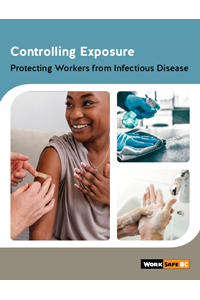Chicken pox (varicella)
Chicken pox is an infection caused by the varicella zoster virus. Typically found in young children, symptoms include mild fever and itchy inflamed blisters. Chicken pox is easily spread through the sneeze or cough of an infected person, or close personal contact. As the virus remains in the body, it can reappear (as shingles) in adults.
- Who is at risk?
- How to reduce the risks
- Resources
Who is at risk?
Chicken pox can occur anywhere in the population. Now that most infants receive the chicken pox vaccine, exposure is much less common. There is no risk of infection for workers who have been vaccinated or previously infected with chicken pox — they are considered immune.
How to reduce the risks
If workers could be exposed to chicken pox, the employer must develop and implement an exposure control plan (ECP). This plan must identify the workers at risk of exposure and the controls required to protect those workers. These will be unique to each worksite and work environment. When choosing risk controls, consider the following questions.
-
1
Administrative controls
This type of control involves changing work practices and policies. Some questions to consider:
- Have workers been vaccinated for varicella?
- Are workers coming into work when they are sick?
- Are workers washing their hands at appropriate times?
- Are work surfaces being disinfected frequently?
-
2
Personal protective equipment (PPE)
This is the least effective type of control. When used, there must always be at least one other control in place as well. Some questions to consider:
- Are workers using gloves?


